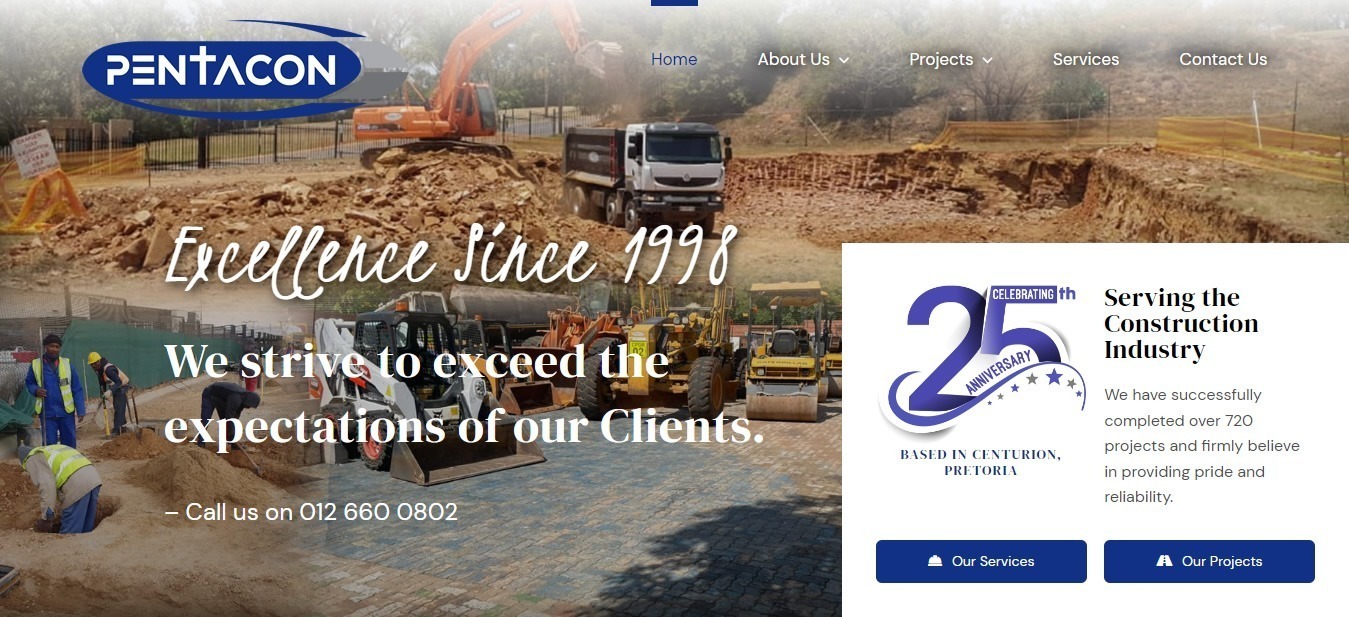Checking Out Cutting-edge Trends in Web Design Pretoria for 2024
Checking Out Cutting-edge Trends in Web Design Pretoria for 2024
Blog Article
Best Practices for Developing User-Friendly Website Design
In the ever-evolving landscape of web style, establishing a straightforward user interface is paramount for engaging audiences and driving conversions. As we explore these foundational principles, it becomes clear that effective customer experience layout not only satisfies user expectations but also sets the stage for deeper involvement.
Simplify Navigating
A structured navigation system is necessary for enhancing user experience on any kind of internet site. Reliable navigating allows individuals to find the details they look for rapidly and easily, consequently minimizing stress and raising the chance of involvement. A clear format that classifies content realistically is critical; users need to without effort comprehend where to click for particular information.
Using an easy top-level navigation bar, matched by drop-down food selections for subcategories, aids in keeping an arranged structure. It is important to limit the number of primary navigating web links to prevent overwhelming individuals; normally, five to seven alternatives are optimal. Furthermore, employing descriptive tags enhances clearness, enabling individuals to discern the web content of each area at a glance.
Integrating a search feature even more improves the navigating experience, particularly for content-rich internet sites. This feature equips customers to bypass standard navigating paths when trying to find particular information. In addition, constant style elements throughout all web pages reinforce knowledge, allowing individuals to navigate with self-confidence.
Maximize for Mobile

Firstly, adopt a responsive design approach that automatically readjusts the format and web content based upon the screen dimension. This versatility makes sure that individuals have a constant experience across devices. Next off, focus on touch-friendly interfaces by ensuring links and switches are easily clickable, reducing the requirement for zooming.
In addition, think about the significance of succinct content presentation. Mobile customers usually seek quick details, so utilizing techniques like retractable food selections or accordions can boost functionality without frustrating the individual. Furthermore, guarantee that fonts are legible, and image sizes are optimized for faster loading.
Finally, examination your web site on numerous smart phones and operating systems to identify prospective problems. By attending to these aspects, you will certainly develop an instinctive mobile experience that maintains users engaged and encourages them to discover your offerings further - Web Design Pretoria. Prioritizing mobile optimization is crucial for attaining a straightforward website design in an increasingly mobile-centric world
Enhance Loading Rate
Filling speed is an essential element that can dramatically affect individual fulfillment and engagement on an internet site. Research studies indicate that individuals anticipate pages to load in 2 seconds or much less; yet limit, the probability of abandonment increases significantly. For that reason, Continue enhancing filling speed is vital for preserving visitors and enhancing total website performance.
To improve filling rate, a number of finest practices need to be applied. Furthermore, take advantage of web browser caching to save copies of documents in your area, enabling faster tons times for returning visitors.

Use Consistent Style Elements
Developing a cohesive aesthetic identity is vital for improving user experience on a site. Consistent layout components, consisting of color pattern, typography, buttons, and layout frameworks, produce a unified look that assists customers browse official website effortlessly. When individuals come across acquainted patterns and styles, their cognitive tons is lowered, enabling them to concentrate on content rather than understanding varying design elements.
Utilizing a standardized color palette enhances brand acknowledgment and promotes a psychological link with individuals. Keeping regular typography-- such as font designs, dimensions, and weights-- makes sure readability and adds to a polished appearance. In addition, consistent button styles and interactive elements direct customers without effort through the site, enhancing use.
Moreover, a natural design assists establish an arranged circulation of info, making it easier for customers to absorb and find content. Each web page must reflect the exact same design concepts to stop complication and disorientation.
Prioritize Availability
A cohesive aesthetic identity not only improves navigating however also establishes the stage for focusing on availability in website design. Ease of access makes certain that all customers, including those with specials needs, can browse and engage with a web site properly. To accomplish this, internet designers need to comply with established guidelines, such as the Internet Web Content Accessibility Standards (WCAG)
Carrying out attributes like alt text for pictures, keyboard navigability, and ideal color contrast can considerably enhance the user experience for individuals with visual, acoustic, or cognitive disabilities. It is critical to use semantic HTML to framework material logically, enabling assistive technologies to translate and communicate info properly Learn More Here to customers.
Moreover, giving numerous methods of involvement-- such as message options for sound and visual web content-- can deal with diverse user requirements. Regular use testing with individuals who have handicaps can discover possible barriers that might not be promptly obvious during the design phase.
Inevitably, focusing on availability not only abides by legal requirements yet additionally broadens the possible target market, cultivates inclusivity, and boosts general site use (Web Design Pretoria). By embedding ease of access into the style process, developers can develop a much more equitable electronic landscape for everyone
Verdict

As we explore these fundamental principles, it comes to be clear that reliable customer experience design not just fulfills customer expectations but likewise establishes the phase for deeper involvement. Mobile users commonly look for quick details, so using strategies like retractable food selections or accordions can boost functionality without overwhelming the user. When customers experience acquainted patterns and styles, their cognitive tons is lowered, allowing them to concentrate on material rather than deciphering differing design elements.
In recap, implementing ideal methods for easy to use internet design significantly boosts the general customer experience. Sticking to these standards cultivates a positive connection between users and digital platforms, ultimately promoting user complete satisfaction and retention.
Report this page